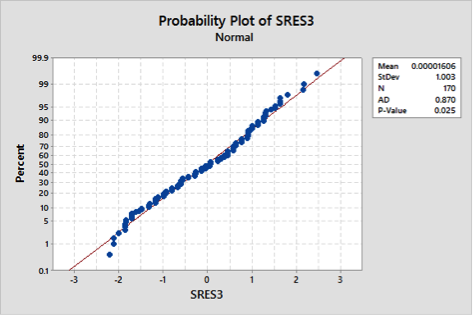I'm experiencing strange patterns of residuals. The following chart is a scatterplot of Standard residuals (Sres) versus Fits. I'm interested in the diagonal lines that mean that a higher fit leads to a smaller error.


General Factorial Regression: Y versus Cavity, DAY
Method
Rows unused 10
Factor Information
Factor Levels Values
Cavity 4 1, 2, 3, 4
DAY 5 1, 2, 3, 4, 5
Analysis of Variance
Source DF Adj SS Adj MS F-Value P-Value
Model 19 0.025927 0.001365 33.07 0.000
Linear 7 0.024252 0.003465 83.97 0.000
Cavity 3 0.022556 0.007519 182.24 0.000
DAY 4 0.001336 0.000334 8.10 0.000
2-Way Interactions 12 0.000733 0.000061 1.48 0.137
Cavity*DAY 12 0.000733 0.000061 1.48 0.137
Error 150 0.006189 0.000041
Total 169 0.032115
Model Summary
S R-sq R-sq(adj) R-sq(pred)
0.0064232 80.73% 78.29% 75.29%
Fits and Diagnostics for Unusual Observations
Obs Y_1_1_1 Fit Resid Std Resid
8 5.37000 5.35800 0.01200 2.09 R
27 5.34000 5.35375 -0.01375 -2.29 R
41 5.39000 5.37667 0.01333 2.20 R
48 5.37000 5.35700 0.01300 2.13 R
54 5.39000 5.37700 0.01300 2.13 R
82 5.37000 5.38600 -0.01600 -2.63 R
142 5.40000 5.38778 0.01222 2.02 R
161 5.37000 5.38300 -0.01300 -2.13 R
R Large residual
Is there a common reason for this behaviour?
The response variable is a diameter of the inner circle fit of a plastic component made by injection. The factors of the ANOVA are the Day of the production and the Cavity since there are 4 cavities in the mould.
